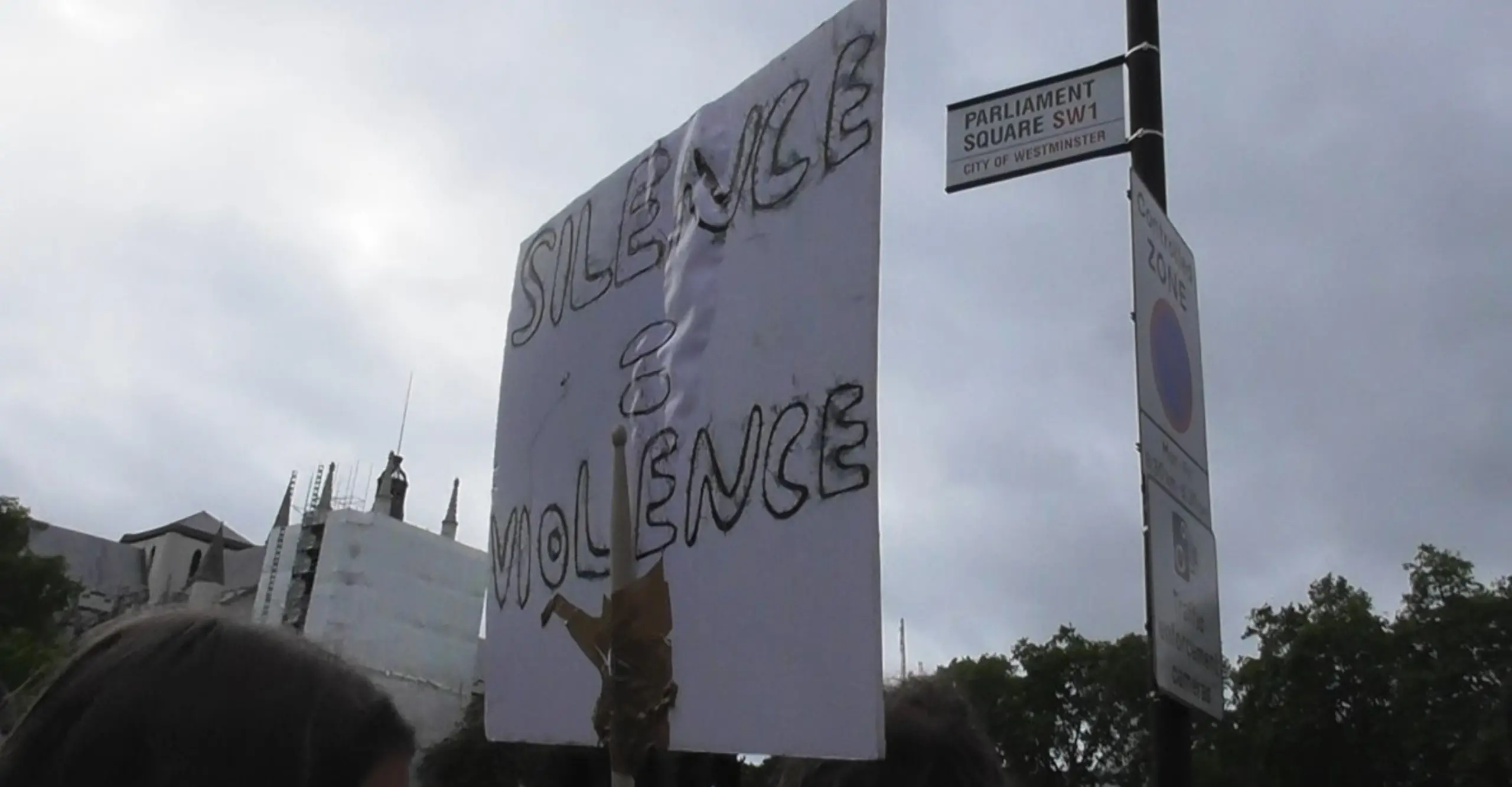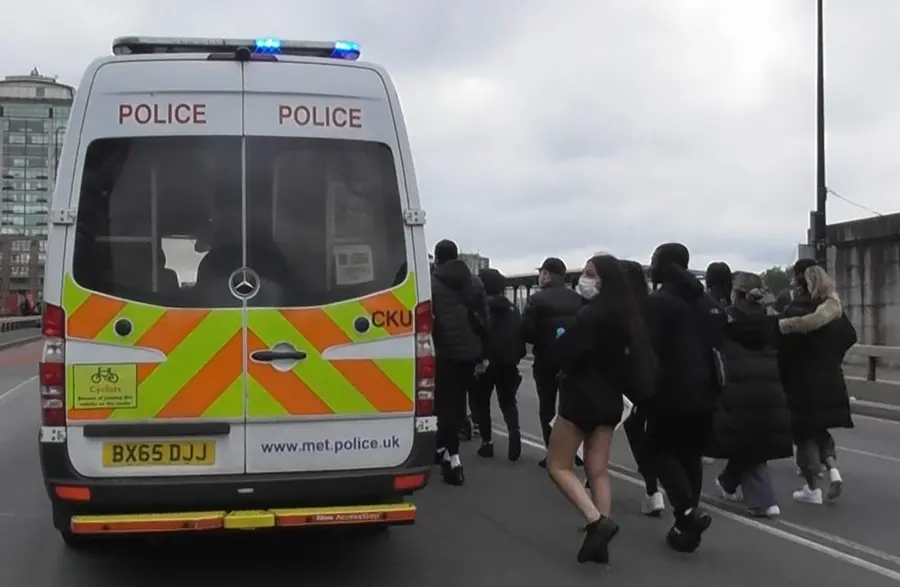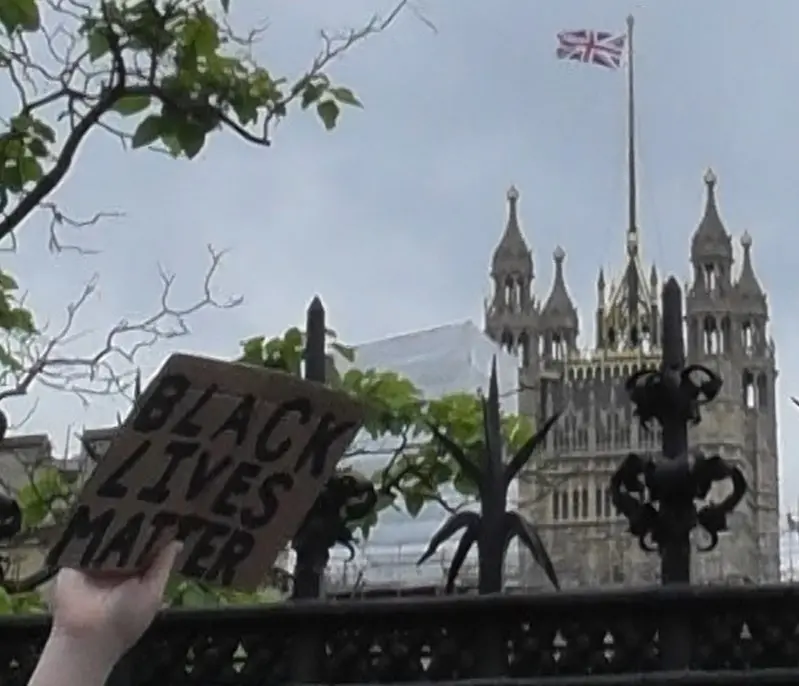Using zoomed in photographs works as a direct communication to telling narratives about people’s reaction to the Death of George Floyd and, the Black Lives Matter Movement allowing racial injustices to come through. I used juxtapositions with the statue of Churchill and the British flag alongside protesters placards to speak to wider associations of patriotism and its impact on people of colour growing up. The location of London is important for bringing the context of the photograph because it reveals the corruption in the UK as well as America. The death of George Floyd led him to become a weighted household name embodying all the lives lost through police brutality and for starting conversations about racism, colonialism, and how individuals’ lives are still being disadvantaged by this today.
These photographs challenge the usual ways of thinking as the narrative is depicted delicately giving context to the surroundings of London, highlighting how attitudes towards Britain's colonial history are changing. The longer you look the more you feel an unsettling itch running throughout your body as you have so many unanswered questions that keep snowballing off on another. Like, why does society have less respect for the police when we are meant to trust the police as they protect us? Therefore, in the photograph above, why is the crowd walking against them and not in solidarity? The feeling of unknowingness can be put in the fault of the education system for hiding the atrocities of the UK’s history of colonialism leaving a feeling of being cheated, robbed, and dis-heartedness. The image sparks a mass layering of emotions which accumulate to the surface.
The media has been seen to depict the BLM protests as violent and aggressive however this photo questions that narrative. In the image, the relationship between the police and the public creates an unresolved and disorientating dynamic. You cannot easily tell who is in control. In doing the protest is unfolding as you should ‘trust,’ the police are in control however the crowd is arranged in a way that looks like they are guiding the van, implying they now have the respect of the streets. The image captures the sombre feeling of that day and how strangers in the public showed their unity by wearing black.
Lastly, it must also be noted the materiality of low- resolution video camera is a way to subvert the hierarchies of image. We fetishize the high-level quality of images as they stand out due to their immersive, seductive, and economic force which is purported by advertisement, graphic design, military, and scientific devices. Instead, the ‘low-res’ images demand more from an audience, as footage and narratives become abstracted and shifted.
– Janaki Mistry



